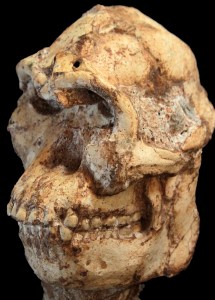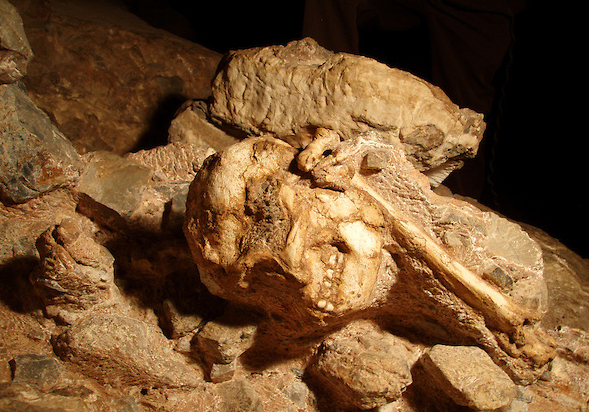BTN.com staff, July 19, 2015
From the Garden of Eden to strange black monoliths, human beings have long sought explanations of their origins.
Purdue researchers recently made a breakthrough on a major piece of the human ancestry puzzle. Using a combination of radioisotopic dating and a gas-filled magnet detector, the team was able to accurately date a well-preserved skeleton of Australopithecus prometheus, an early forebear of modern-day Homo sapiens.

A crew that included Purdue professors Mark Caffee and Darryl Granger and former postdoctoral researcher Ryan Gibbon determined the Australopithecus fossil, dubbed ?Little Foot,? is about 3.67 million years old. That?s older than the estimated age of the famous ?Lucy,? a female Australopithecus found in Ethiopia in 1974, which was determined to have lived 3.2 million years ago.
?We are thrilled and excited with this,? Caffee said. ?The new age of 3.67 million years is plus or minus 160,000 years. That?s better than 5 percent.?
A few years after it was discovered in a South African cave two decades ago, Little Foot was dated at about 4.1 million years old, but that figure wasn?t necessarily reliable and had a considerably higher margin of error. Caffee said there was a great deal of controversy and skepticism surrounding that figure.
?Nobody wanted to believe the skeleton was that old,? he added.
The updated age will help scientists better understand the role Australopithecus played in human evolution, Caffee said.
?This makes the evolutionary tree more interesting,? he explained. ?It says that 4 million years ago, there was more than one Australopithecus. There were more branches on the tree and [human evolution was] more complicated.?
Though this recent dating work was performed in West Lafayette, this was truly an international effort. Caffee and the other Purdue researchers were part of a global team of academics and scientists from South Africa?s University of the Witwatersrand, Canada?s University of New Brunswick and France?s University of Toulouse.
[btn-post-package]Witwatersrand?s Ronald Clarke, a professor in the Evolutionary Studies Institute, holds the distinction of discovering the Little Foot skeleton originally. But Caffee and company are definitely proud of the part they played in this most recent development.
?Yeah, there are some bragging rights here,? Caffee said. ?Of course, the bigger picture is to really find what is the oldest ? to see how far back it goes with the Australopithecus.?
By Tony Moton







